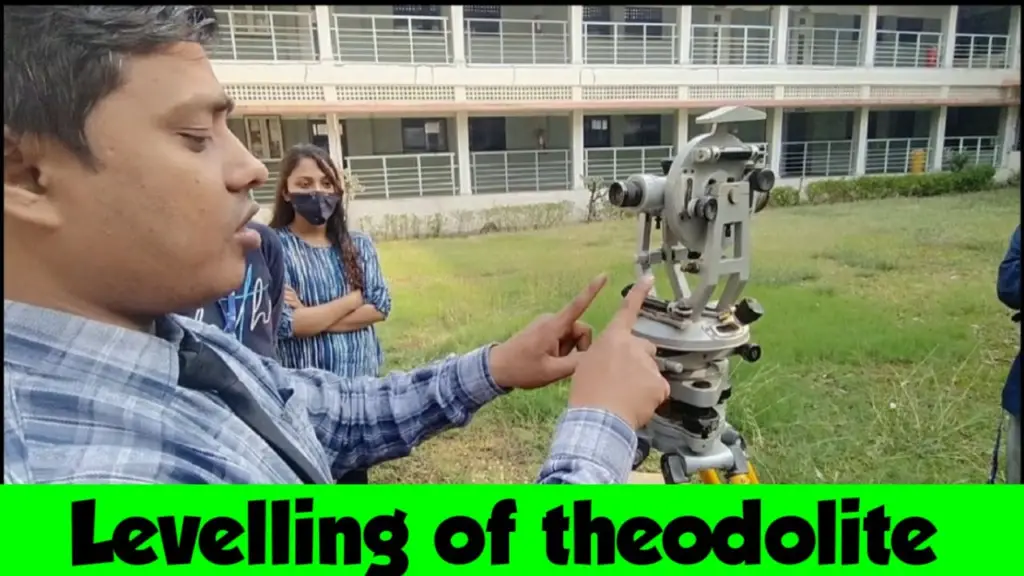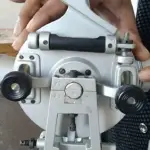In order to measure distance with theodolite, you need to use the telescope to identify two points and measure the vertical and horizontal angles. Once you have got the angle, you can use distance measuring device to get distance between these points. Now finally, use these angles and distance to know the lengths of the sides using angle measurement by Pythagorean Theorem.
But that’s not all, in our today’s blog I’ve explained these steps in detail so you can use theodolite to measure distance.

Why Theodolite?
A precision instrument used for measuring horizontal and vertical angle is termed as theodolite. It is mostly used in construction and surveying industry. Its application includes geodetic building construction and in land surveying. Apropos to above, it an excellent tool.
The following guide elaborates the different step involved in the measuring the distance using theodolite.
Understanding the Basics of a Theodolite
Theodolite is comprised of telescope which is mounted on a tripod stand. It has a rotating base used in the measurement of angles with the help of calibrated circles. The horizontal and vertical circle corresponds to azimuth and zenith or horizontal and vertical measurement respectively.
Setting Up the Theodolite
To ensure precise measurements, proper setup is crucial. Here are the steps to set up a theodolite correctly:
Step 1: Choose a Stable Location
Select a stable and level surface to set up the tripod. Avoid locations with uneven terrain, as it can introduce errors in your measurements.
Step 2: Level the Theodolite
Use the built-in bubble level to ensure the theodolite is perfectly level. Adjust the tripod legs accordingly until the bubble is centered.
Step 3: Align with True North
For accurate azimuth measurements, align the theodolite’s base with true north using a compass or GPS. This step is essential to avoid magnetic declination errors.
Like Us on Facebook!
Measuring Horizontal Angles
Once the theodolite is set up correctly, you can proceed with measuring horizontal angles. Follow these steps:
Subscribe Us on YouTube!
Step 1: Target the Object
Look through the theodolite’s telescope and aim it at the object you want to measure the angle to.
Step 2: Record the Reading
Read the horizontal angle measurement from the horizontal circle of the theodolite. Most modern theodolites come with digital displays, which provide more precise readings.
Step 3: Repeat for Additional Points
For more accurate results, measure the horizontal angles to multiple points around the object and record the readings.
Also Read: The Importance of Reference Sketch in Surveying
Measuring Vertical Angles
To measure vertical angles using the theodolite, follow these steps:
Step 1: Reset the Vertical Circle
Ensure that the vertical circle is properly reset to 0 degrees before taking measurements.
Step 2: Sight the Object
Look through the telescope and aim it at the top or bottom of the object whose vertical angle you want to measure.
Step 3: Record the Reading
Read the vertical angle measurement from the vertical circle. Again, digital theodolites offer precise readings.
Also Read: The Critical Role of Land Surveying in Civil Engineering and Infrastructure Development
Step 4: Repeat for Accuracy
For enhanced accuracy, repeat the process and measure the vertical angles to multiple points on the object.
Calculating Distance Using Angles
The basic trigonometric calculations is being used to calculate the distance to specified object after measuring the horizontal and vertical angles. The process utilized the principle of right-angled triangle and involved the process of triangulation.
Step 1: Record the Baseline
Measure the distance between your theodolite’s location and a known point, known as the baseline. This baseline will be a side of the triangle used for calculations.
Step 2: Perform Trigonometric Calculations
Using the measured angles and the baseline distance, you can calculate the distances to the various points you targeted. Modern theodolites often have built-in software for these calculations, making the process faster and more accurate.

Optimizing Theodolite Measurements for Accuracy
While theodolites are sophisticated instruments, obtaining precise measurements requires attention to detail and adherence to best practices. Here are some tips to optimize your theodolite measurements:
Calibrate Regularly
Ensure your theodolite is calibrated regularly to maintain accuracy over time. Calibration corrects any systematic errors and ensures reliable measurements.
Also Read: Types of theodolite in Surveying (Advanced)
Account for Refraction
In surveying over long distances, atmospheric refraction can affect measurements. Consider using refraction correction formulas to compensate for this effect.
Weather Conditions Matter
Extreme weather conditions, such as high winds or heat shimmer, can influence theodolite measurements. Avoid measuring during adverse weather and wait for optimal conditions.
Employ Multiple Observers
To minimize observational errors, involve multiple observers and take multiple readings for each angle.
Record Environmental Data
Note down environmental conditions, such as temperature and air pressure, during measurements, as these can impact theodolite readings.
Conclusion
In conclusion, theodolites are invaluable tools for measuring distances and angles in various industries. By following the correct setup and measurement procedures, you can obtain accurate and reliable data for your projects. Remember to optimize your measurements by calibrating regularly and considering environmental factors.





















